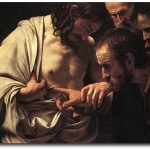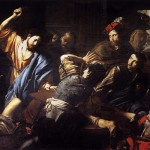Why do I as a happily married man love a good break-up song. Defamiliarizing Experience. It reminds me of the good thing that i have.
Archives For Uncategorized
John alone of the Gospel writers provides the name of the servant who’s ear Peter hacked off with a sword.
Simon Peter then, having a sword, drew it and struck the high priest’s slave, and cut off his right ear; and the slave’s name was Malchus. (John 18:10)
Why do we care what the person’s name was. Numerous people chalk it up to simply an eyewitness detail that John wants to record. I can certainly think of other eyewitness details that seem more important than the name of this man – what Jesus looked like is big one. A slave’s name is not. I wouldn’t have thought to ask this question until I looked up what the name means. It means Kingdom. Here’s why it matters.
New situation calls for a new way to be the church. We need to eradicate the old way of which church do you go to. Implying that the church is a location. It’s not a location but rather a people. How do we bring that out again. What’s a cheaper more authentic way to do church. Advances in technology have made the old way of doing church more obsolete. Its infrastructure heavy. We need to be a band of gurilla warriors to fight in the new market of ideas. This is a way we can do that.
1. Table
The table is central to the idea of the New Testament church. The theme of eating and sharing is foundational to the way church was done in the New Testament. The table implies community. It implies nutritionment of the body as well as the sole. We share food but we also share conversations. Jesus, he’s what’s for dinner.
2. Homes
They met from house to house. Who needs a building when you have technology to connect you? A central place was important back in the day but it wasn’t as important when the church was a guirilla band of fighters making cultural moves in the society. As the money for the church has drained. The infrastructure heavy approach to christianity needs to go the way of the dinosaur. Its a behemoth that takes away money from what really matters. That’s relationships on an interment more real level.
3. Location / Action
Church has fostered a place to attend but lacks something to do. The table invites conversation and reflection and opens up the possibility for new ideas and growth.
4. Connected
5. Technology
6. Overhead (What would we spend our money on)
7. The Future of Education
8.
I chose you (Israel) that I might display my grace in you. This was God’s intention!


















